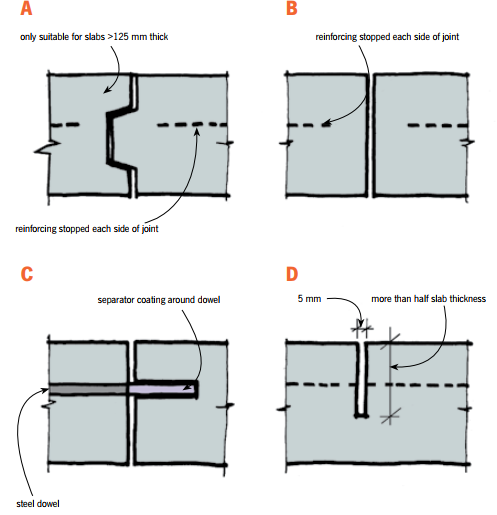
Table of Contents
ToggleA contraction joint, also known as a control joint, is a type of joint used in construction to control the potential cracking of concrete or other building materials due to shrinkage and expansion caused by changes in temperature, moisture, or other environmental factors. The joint is typically placed in areas of the structure where such cracking is most likely to occur, such as in large concrete slabs, walls, or floors.
By placing a contraction joint, the concrete or other material is allowed to move and expand without causing cracks. This is important because without control joints, cracking can compromise the structural integrity of the building and make it structurally unsound. Additionally, without contraction joints, aesthetic considerations may also be an issue since cracking can impact the appearance of the building. Therefore, including contraction joints in construction projects is a crucial step in ensuring the durability, safety, and overall appeal of a structure.
When planning the locations for contraction joints in a building, it is important to follow certain guidelines to ensure the structural integrity and longevity of the building.
First, contraction joints should be placed in areas where natural cracks or joints are likely to form, such as at changes in plane, changes in materials, or where expansion and contraction occurs due to temperature or moisture changes. Second, the spacing of contraction joints should be based on the building materials and the local climate, with larger spacing in areas with less extreme temperature or moisture fluctuations. As for which building code to use, it depends on the location of the building.
In the United States, the International Building Code is widely adopted and provides guidance on contraction joint placement, but individual states or municipalities may have their own regulations that should be followed. It is important to consult with a licensed engineer or architect to determine the best practices and building codes to follow for the specific location and type of building.

Guidelines for planning joint locations
- Maximum joint spacing L(m) is 24-36 times the slab thickness t(m), in both the transverse and longitudinal directions. For example, a 10 Cm thick slab should have a contraction joint every 2.4-3.6m. Panels should never be greater than 4.6m in either direction, regardless of slab thickness. Note that this is the maximum joint spacing, but smaller panels can be used.
- It’s best to plan the joints to intersect at 90 degrees or greater. Never plan intersection angles to be less than 60 degrees.
- Contraction joints should terminate (at form lines or construction joints) at angles greater than 90 degrees. Never plan for angles less than 60 degrees.
- When “dog legs” are used at the end of a contraction joint to orient it in proper relation to a form line, they should be 30cm to 46cm long.
- Contraction joints should intersect any boxouts or drains.
- Pavement shapes that cause planes of weakness, such as inside corners, should be included in the contraction joint layout.
- Isolation Joints
Also referred to as expansion joints, isolation joints should be placed wherever pavement abuts other features such as columns, curbs, foundations, or other immovable objects. Their purpose is to isolate the movement of the pavement. As a general rule, isolation joints should not be placed in the body of the pavement. - Aggregate Interlock If contraction joints are placed according to the guidelines listed above, the crack that develops beneath the joints will be narrow, allowing aggregates on either side of the crack to interlock. This helps with load transfer and differential slab settlement. Crack widths must not exceed 0.04 inch for good aggregate interlock. Fewer joints will result in greater crack widths and less load transfer.


Before casting concrete, it is important to plan and place contraction joints to prevent unsightly cracks from forming. Contraction joints are placed to allow the concrete slab to shrink and prevent tensile stress buildup.
The first step in placing a contraction joint is to determine the spacing and orientation of the joints based on the dimensions of the slab. The joints should be spaced at intervals that allow for the expected shrinkage of the concrete.
Next, use a concrete saw or a groove cutter to cut a notch along the predetermined line. The depth of the groove should be about one-fourth the thickness of the slab. After grooving the surface, you can insert a joint filler material, usually made of asphalt impregnated fiberboard or a flexible polymer material.
Finally, trowel the surface to finish the slab. The contraction joints will help to maintain the structural integrity of the slab and prevent unsightly cracks.
If a contraction joint is formed by separate pours, it is requires that the concrete on one side of the free joint is allowed to harden for 16 hours before new concrete can be placed on the other side of the joint.


